Egyptian creation story From Earthly Paradise to Heavenly Kingdom
The various Egyptian creation story attempts to describe the complex phenomenon of the origin of the world. The creator has always arisen from itself (kheper djesef); he is husband and wife, father and mother. He is the One, origin of the Many.
After creation, gods and humans lived together in a paradise world. Thanks to the permanent presence of the sun god there was no change of day and night and death did not yet exist.
When the sun god became obsolete, mankind revolted. Re had some of them destroyed, but some remained alive (cf. the story of the flood in the Bible).
The sun god (tired of it) and left the earth; he ascended to heaven on the back of the celestial cow, followed by the gods; only Osiris remained on earth.
Paradise was lost, the perpetual day gave way to the day/night cycle and man became mortal. Only through death did the “realm of heaven” become accessible.
Creation Story of Heliopolis
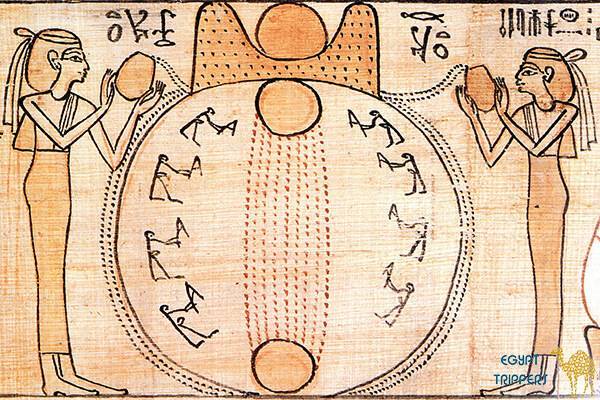
Egyptian creation is represented as an evolutionary process in this ancient creation narrative, which is extremely close to our modern big bang theory.
There was nothing in the beginning except the Nun, an infinite ocean of liquid “primordial matter” from which all subsequent components would be produced.
In this primordial water floats the creator Atum, who originated from himself, he is the Monad, the Only One. We can speak here of a “primordial monotheism” because the multiplicity of creation arose from the work of that “One”.
At his creation, Atum, as the first element of the cosmos, creates the “primordial hill”, a high place that emerges from the primordial ocean. From this primordial hill, he will create the rest of the universe.
The androgynous creator creates the air and the humidity through masturbation, in the form of the pair of gods Shu and Tefnut; herewith begins the differentiation of the masculine and feminine elements, and creation can be continued; these gods in their turn create the earth and the sky, like the gods Geb and Nut.
Geb and Nut give birth to two pairs of gods: Seth and Nephtys and Osiris and Isis, who themselves have the child Horus.
Creation Story of Hermopolis
In Hermopolis, the local chief god Thoth created the cosmos, along with a group of four pairs of primordial gods (the ogdoade):
- Nun and Naunet (primordial waters),
- Amun and Amonet (air and hidden power),
- Kek and Keket (darkness) and
- Heh and Hehet (endlessness).
On the primordial mound rising from the primordial ocean, Thoth placed an egg from which the sun rose, the beginning of creation.
Creation Story of Memphis
In Memphis, it is the god Ptah who conceived creation in his heart and pronounced it with the tongue. As in the Bible, creation is realized here through the word.
Creation story of Saïs
In Saïs, it is the goddess Neith who emerges from the Nun in the form of the celestial cow (Mehet-weret) “the great swimmer”, with the sun god Re between the horns. The sun determines space through its light and time through its course.
Creation Story of Esna
In Esna, the god Khnum created the world on his potter’s wheel and placed this instrument in the belly of the women so that they could continue the act of creation.
Back to the chaos
From his seed, his word, or his hands, the creator builds in the creation tales above.
According to the Egyptians, time and space limit the world. This early insight has not been refuted but clarified by modern cosmogony.
Heaven and earth will reunite at the “end of time,” after which the sun’s cycle will come to an end, and the primordial water and primordial darkness will once again rule the universe, with only the creator surviving and returning as a primordial entity.
Representation of the Cosmos
The Egyptians imagined the earth as a disk. It was only the Greeks who realized that the earth was spherical. In the 3rd century BC Eratosthenes, of the Alexandrian school of science, calculated the circumference and size of the earth.
According to the Egyptians, the primordial water Noen enveloped the Earth’s disc. Above the earth was the vault of heaven formed by the body of the sky goddess Nut bending over the earth; her hands and feet touched the surface of the earth. During the day the sun god sailed in his “daybark” along with the vault of heaven, in the evening Nut swallowed the sun to give birth to him again the next morning. In the middle of the night, Re’s “nightbark” had pulled him through her body. In the same way during the day the stars crossed the body of the sky goddess.
The temple as a representation of the cosmos
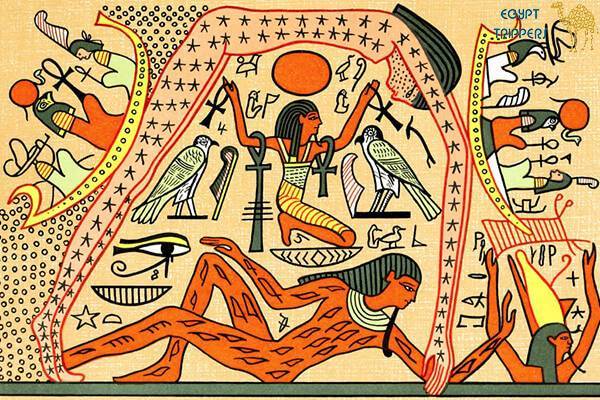
The temples from the Greco-Roman period give us a concrete representation of the Egyptian image of the cosmos:
- The “wavy” enclosure wall depicts the primeval water (the Noen).
- The higher floor of the Most Holy Place symbolizes the primordial mound that rose from the primordial waters.
- From the floor of the temple, (the earth), one descends into the subterranean crypts that represent the underworld.
- The gigantic pylon towers through which one enters the temple grounds represent the hills of the horizon between which the sun rises and sets.
- From the bottom of the hypostyle halls (primordial swamp) papyrus and lotus-like columns ‘grow’; they symbolize the pillars of heaven and bear the temple roof studded with the stars of the night sky, or representations of Nut, the sky goddess, or of falcon and vulture deities.
The continuous creation
The moment of creation the Egyptians call Sep Tepi (the first time). When it comes to creation, it’s not a one-time occurrence, but rather an ongoing process: the daily rhythm of day and night, yearly Nile floods, and the succession of kings, for example.
Creation has driven Nun back to the limits of the cosmos, but the chaotic powers contained within it ceaselessly threaten ordered creation. There must be regular cult rites to prevent them and sustain the cosmic world order. Surely one of the most important tasks of the king (as the one who performed the actual ritual) is to actually ensure world order.
The walls of the temples depict the king in his struggle against chaos; the king slays the enemies, the king hunts against wild beasts (chaos), the king erects the djed pillar (ensures stability), etc.
In addition to the beginning (Sep Tepi), the Egyptians understood that the world will come to an end. In the Book of the Dead, Atum declares: “I will destroy all that I have made.”The world will sink again in the primeval water, as in the very beginning”
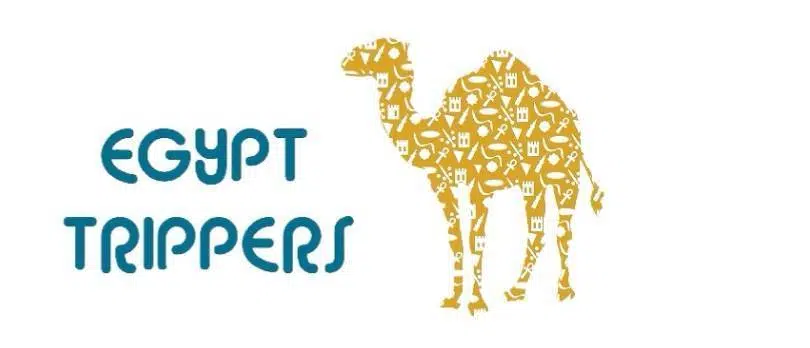
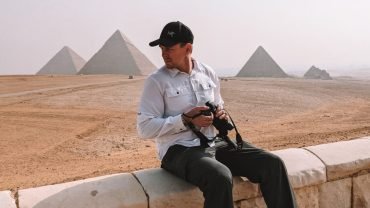
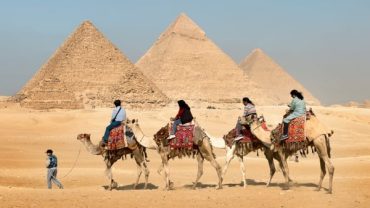
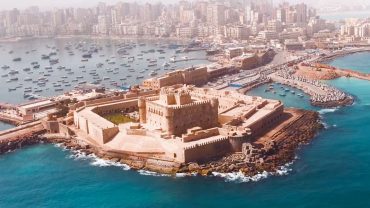
Comment (0)